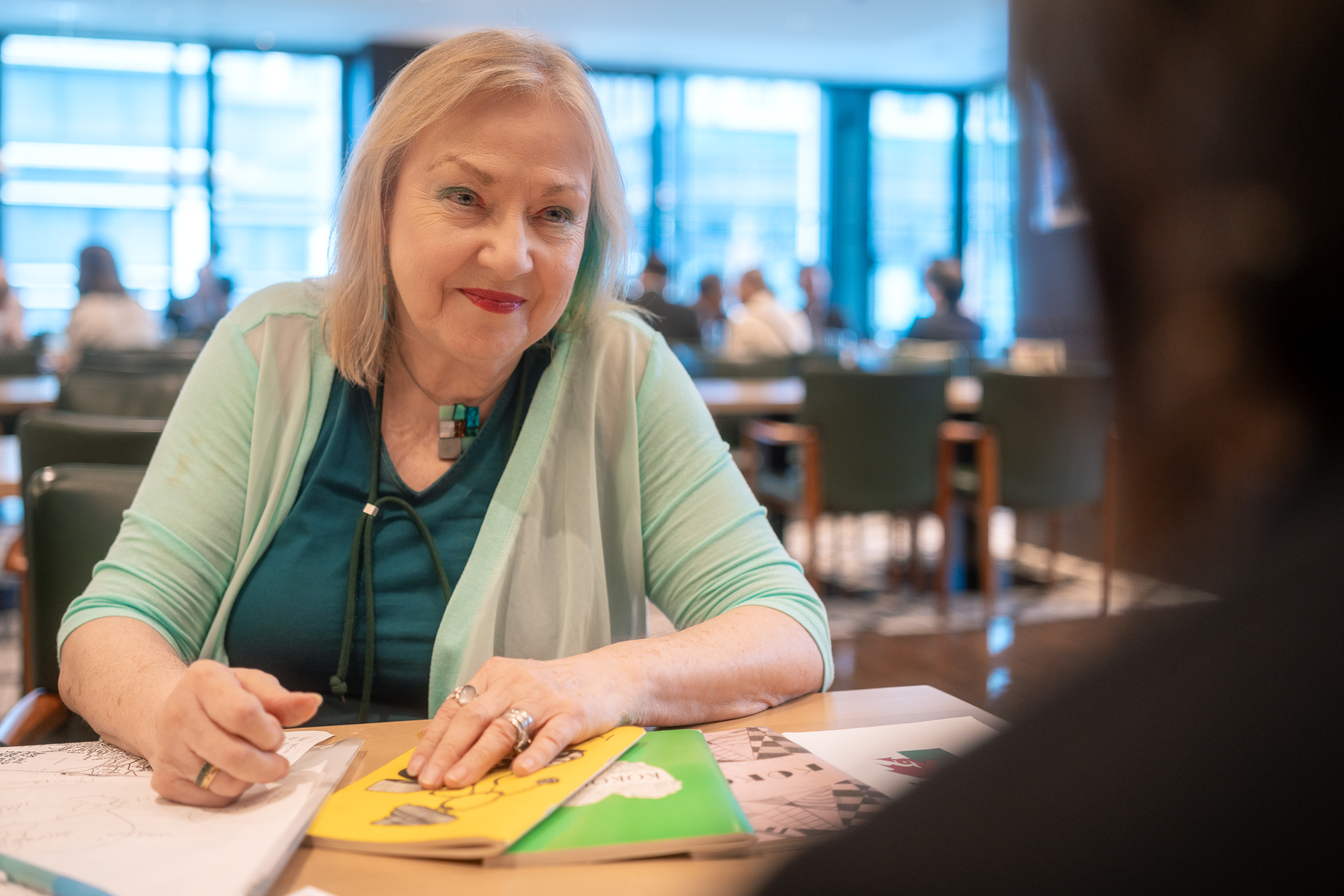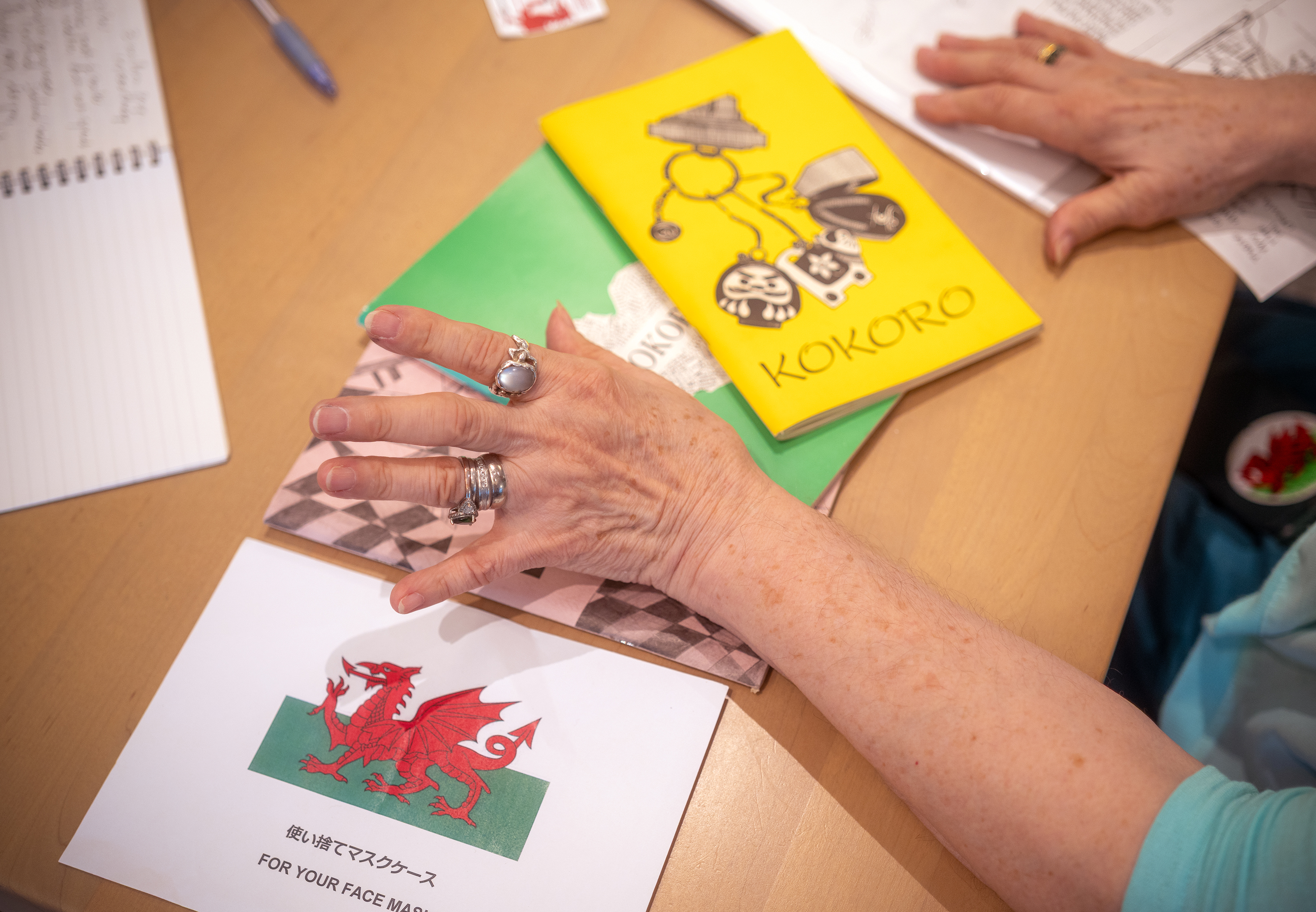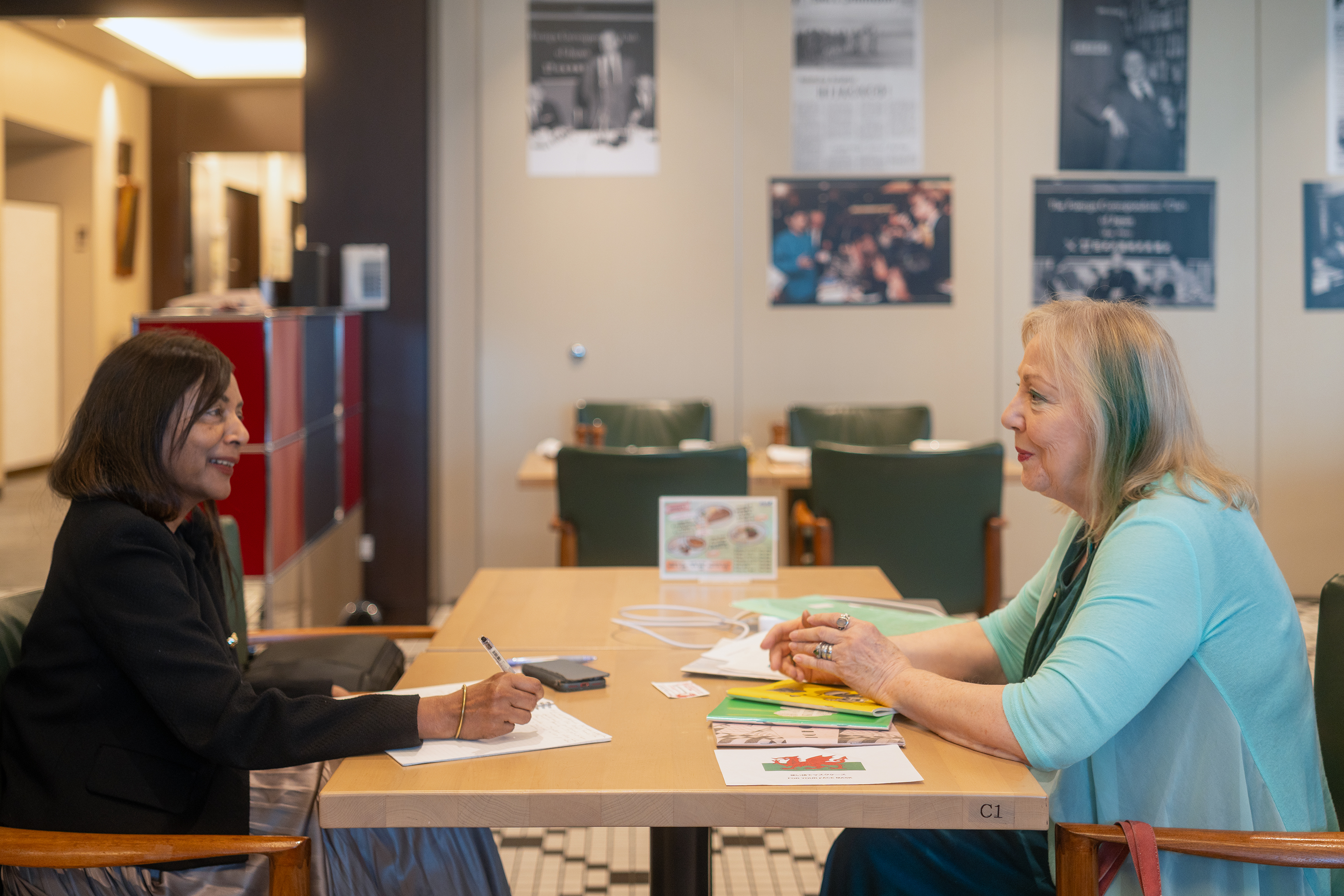Issue:
August 2025 | Ask an Associate
Ursula Bartlett-Imadegawa has spent decades bringing Japanese arts to the world – and Welsh history and culture to Japan

Ursula Bartlett-Imadegawa rarely misses FCCJ events featuring Japanese traditional arts. "Please produce more,” she said during our recent meeting at the Club.
Bartlett, who is from Wales, has good reason to make the request – she produced the six original English earphone guides for Kabuki-za theater in Ginza - part of a long career showcasing Japanese arts to foreign audiences.
The Club’s events, which are presented in English, are valuable opportunities for people with limited Japanese skills to gain a better understanding of the traditional arts of their adopted home, she said.
After arriving in Japan in the 1970s, Bartlett became an art teacher at an international school. “My work began with my love for the world of woodblock prints,” she said, referring to her art history and design studies at the Roehampton Institute in London.
It was there that she came across Ukiyo-e works from 16th to the 18th centuries, described by her professor as representations of a “floating world” and the transient lives of people of the time. “I was intrigued and planned to visit Japan,” she said.
Bartlett’s first encounter with Tokyo reinforced her desire to bring Japan’s traditional arts to new audiences.

The contrast between the megalopolis with Cardiff, the city of her birth, could not have been greater. The Welsh capital had a much tinier human population, and a good number of sheep.
While her new environment was dominated by expatriates, Bartlett pursued her fascination with woodblock prints. “Ukiyo-e are gorgeous paintings of actors and geisha who were loved by the public,” she said. “The delicately intricate craft is a wonder of the Edo period.”
Her studies took her to the kabuki theater where, despite her then limited Japanese-language skills, she found herself captivated by the stage depictions of love suicides, ghosts and samurai adventures.
Several decades ago, Japanese kabuki fans would spend most of the day eating and drinking while waiting patiently to watch a play. Bartlett recalls seeing an elderly man dressed in a kimono, biding his time whisking matcha powder and hot water in a bowl he had brought with him. “His utensils were packed into an exquisitely carved wooden box that he opened and closed with great care,” she said.

Bartlett included these intimate moments in her English commentary to enrich the Kabuki experience for foreigners. While food and drink are banned from the current Kabuki-za, which was renovated in 2013, people can still eat bento during intermissions.
Refreshments aside, she remains fascinated by the lore of kabuki, from the tradition of actors visiting graveyards before performing plays about departed spirits to the dark purple yamai hachimaki bandanas worn by characters who are ill.
Along with her husband, a Japanese lawyer and fellow kabuki fan, she continues to advance the cause of cross-cultural connectivity in her quest to help outsiders better understand Japan.
Bartlett is the founder and current president of the St David's Welsh Society of Japan, which provides a spiritual home for Welsh expats and promotes their country’s history and culture.
“It is a comfortable feeling to be among your own,” she said. “The meaning of loyalty and clan is greatly appreciated in Japan, where people understand the importance of place.”
Suvendrini Kakuchi is Tokyo correspondent for University World News in the UK.

